
Hasora badra, the common awl, is a butterfly belonging to the family Hesperiidae, which is found in India.

Cepora nadina, the lesser gull, is a small to medium-sized butterfly of the family Pieridae, that is, the yellows and whites. The species was first described by Hippolyte Lucas in 1852. It is native to Sri Lanka, India, Myanmar, Hainan, and southeast Asia.

Bindahara phocides, the plane, is a small butterfly found Indomalayan and Australasian realms that belongs to the lycaenids or blues family.

Doleschallia bisaltide, the autumn leaf, is a nymphalid butterfly found in South Asia, Southeast Asia, and Australasia. In Australia it is also known as the leafwing.

Pratapa deva, the white royal, is a lycaenid or blue butterfly found in the Indomalayan realm. The species was first described by Frederic Moore in 1857.

Dichromia is a genus of moths of the family Erebidae first described by Achille Guenée in 1854.
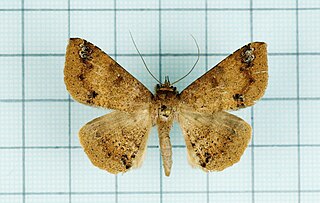
Ericeia inangulata, the sober tabby, is a moth in the family Erebidae. The species was first described by Achille Guenée in 1852. It is found in the Indo-Australian tropics of China, India, Sri Lanka, Myanmar, and the Marianas and Carolines, Fiji, Vanuatu, New Caledonia and Samoa.

Callidrepana patrana is a moth in the family Drepanidae. It was described by Frederic Moore in 1866. It is found in Nepal, India, Cambodia, Sri Lanka, Thailand, mainland China, Japan and Taiwan.
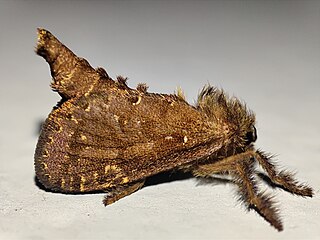
Palpifer taprobanus is a moth of the family Hepialidae. It was described by Frederic Moore in 1887 and is found in Sri Lanka.
Risoba obstructa is a species of moth of the family Nolidae first described by Frederic Moore in 1881.

Harita rectilinea is a moth of the family Noctuidae described by Frederic Moore in 1882. It is found in India, Sri Lanka, Myanmar, Peninsular Malaysia and on Sumatra and Borneo.
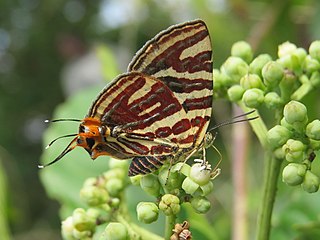
Cigaritis lohita, the long-banded silverline, is a species of lycaenid or blue butterfly.
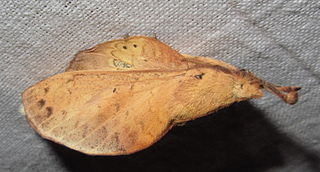
Gastropacha pardale, the brown lapped moth, is a moth of the family Lasiocampidae. The species was first described by Francis Walker in 1855.
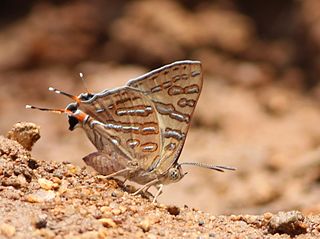
The Common shot silverline, Cigaritis ictis, is a species of lycaenid butterflies. It is native to India and Sri Lanka. The Sri Lankan population is classified as a subspecies: Cigaritis ictis ceylonica(Felder, 1868).

Callyna costiplaga is a moth of the family Noctuidae first described by Frederic Moore in 1885. It is found in India, Sri Lanka and China.

Polytela gloriosae, the Indian lily moth or lily caterpillar, is a moth of the family Noctuidae. The species was first described by Johan Christian Fabricius in 1781. It is found in Sri Lanka, India and probably in Indonesia.
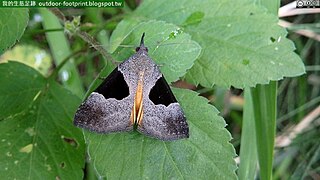
Dichromia orosia, sometimes as Dichromia sagitta, is a moth of the family Erebidae first described by Edward Meyrick in 1913. It is found in Sri Lanka and Australia. The caterpillar is a pest of Marsdenia species, Tylophora asthntatica and Tylophora indica.
Dichromia cognata is a moth of the family Erebidae first described by Frederic Moore in 1885. It is found in Sri Lanka, India, Hainan, Borneo, New Guinea, Bismarck Islands, Solomon Islands and Vanuatu.
Dichromia occatus is a moth of the family Erebidae first described by Frederic Moore in 1882. It is found in the Indian subregion, Sri Lanka, Taiwan, Japan, Korea, Laos, Borneo, the Philippines, Sulawesi, Java and Bali.
Hypena vestita, is a moth of the family Erebidae first described by Frederic Moore in 1885. It is found in India, Sri Lanka and Borneo.
















